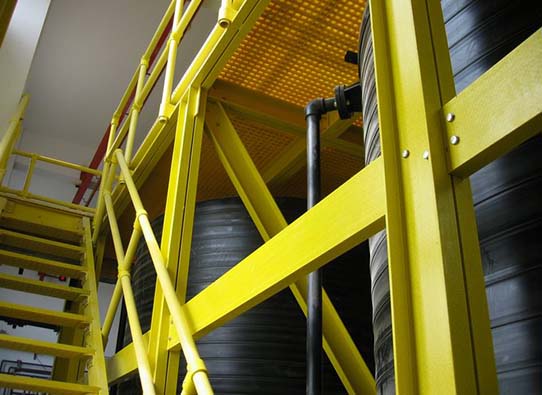Brief On Pultrusion:
The raw materials for pultrusion include a liquid resin mixture (containing resin, fillers and specialized additives) and flexible textile reinforcing fibers. To achieve the reinforcement purpose, materials in continuous forms such as rolls of fiberglass mat and doffs of fiberglass roving are used. During the pultrusion process, the raw materials are pulled through a heated steel forming die using a continuous pulling device. When the reinforcements are saturated with the resin mixture ("wet-out") in the resin bath and pulled through the die, the resin comes hardened due to the heat from the die and the cured profiles are thus formed in the same shape as the die.
The advantages
Corrosion resistant and anti-aging
non-conductive and non magnetic
Light weight and great strength and impact strength
Long service life and maintenance-free
Bright color and good appearance
Easy of installation and dimensional stability
Water-proof, fire retardant
Brief On Pultrusion:
The raw materials for pultrusion include a liquid resin mixture (containing resin, fillers and specialized additives) and flexible textile reinforcing fibers. To achieve the reinforcement purpose, materials in continuous forms such as rolls of fiberglass mat and doffs of fiberglass roving are used. During the pultrusion process, the raw materials are pulled through a heated steel forming die using a continuous pulling device. When the reinforcements are saturated with the resin mixture ("wet-out") in the resin bath and pulled through the die, the resin comes hardened due to the heat from the die and the cured profiles are thus formed in the same shape as the die.
The advantages
Corrosion resistant and anti-aging
non-conductive and non magnetic
Light weight and great strength and impact strength
Long service life and maintenance-free
Bright color and good appearance
Easy of installation and dimensional stability
Water-proof, fire retardant
